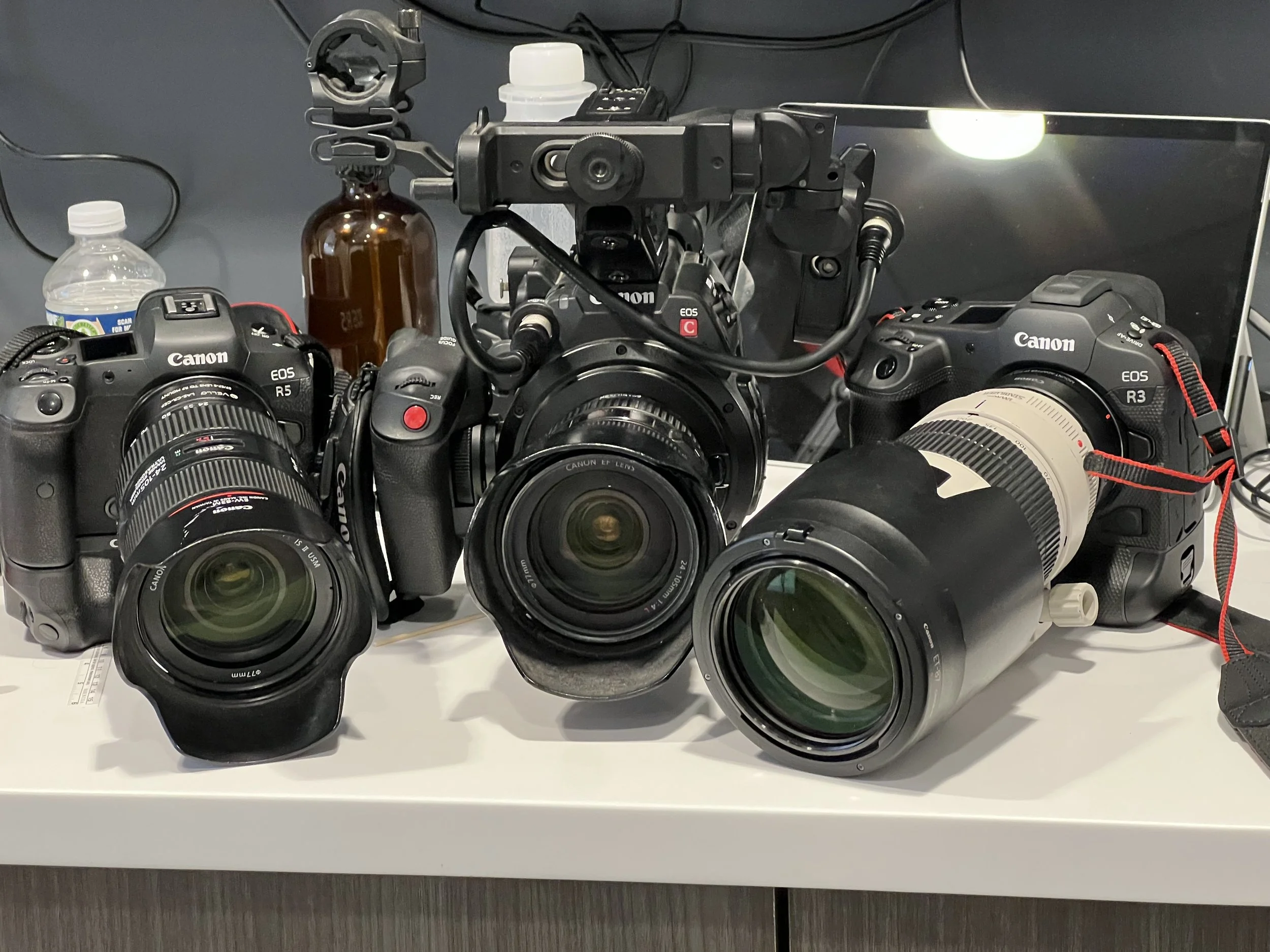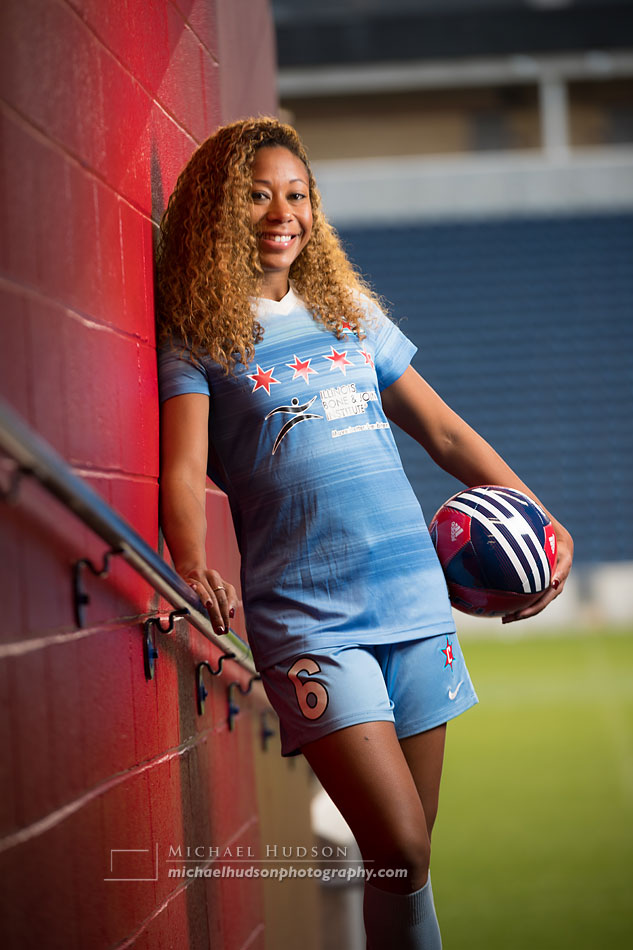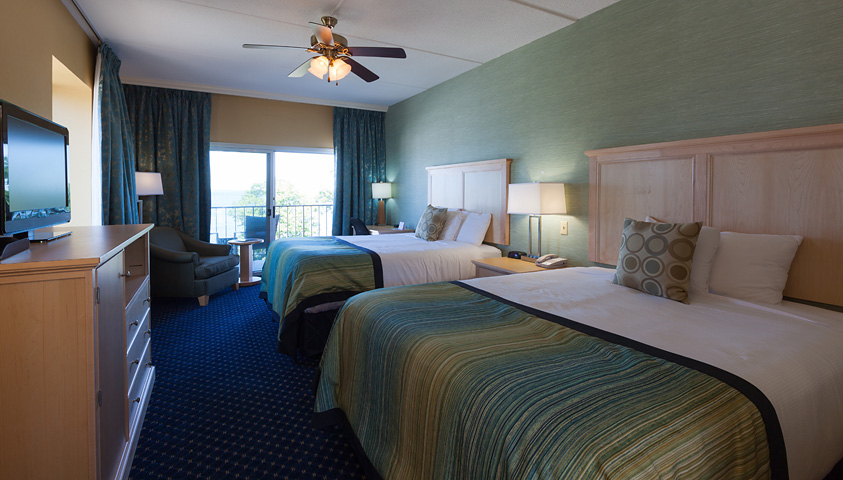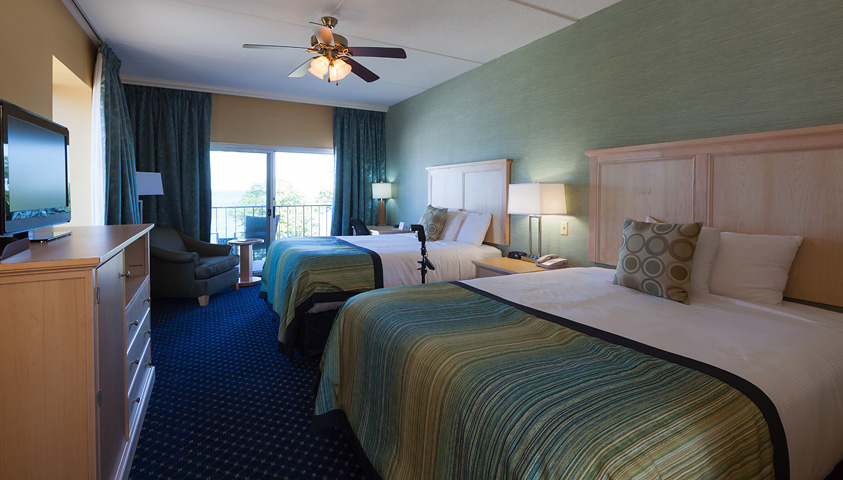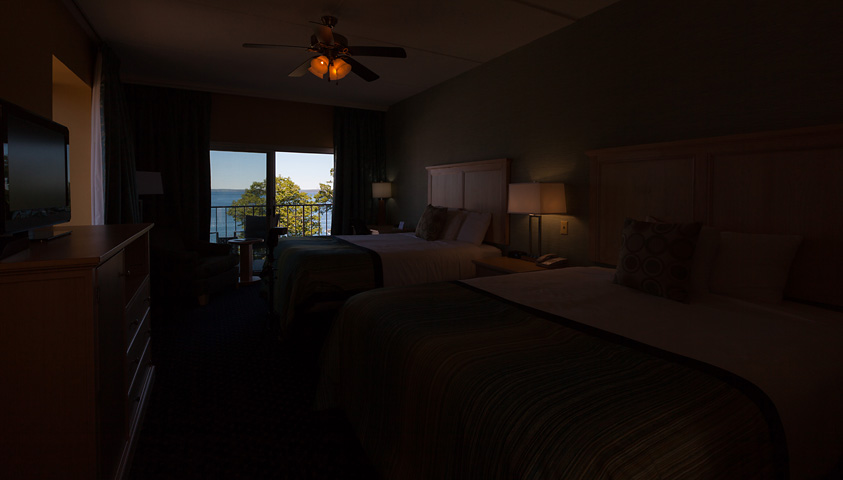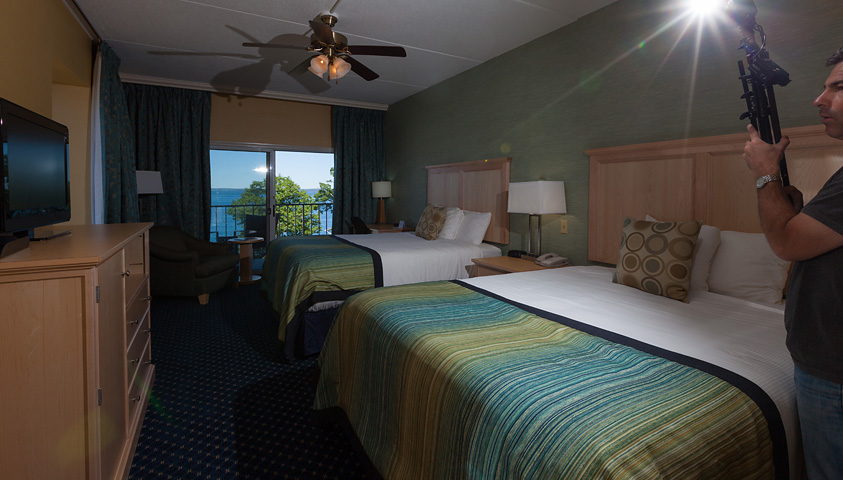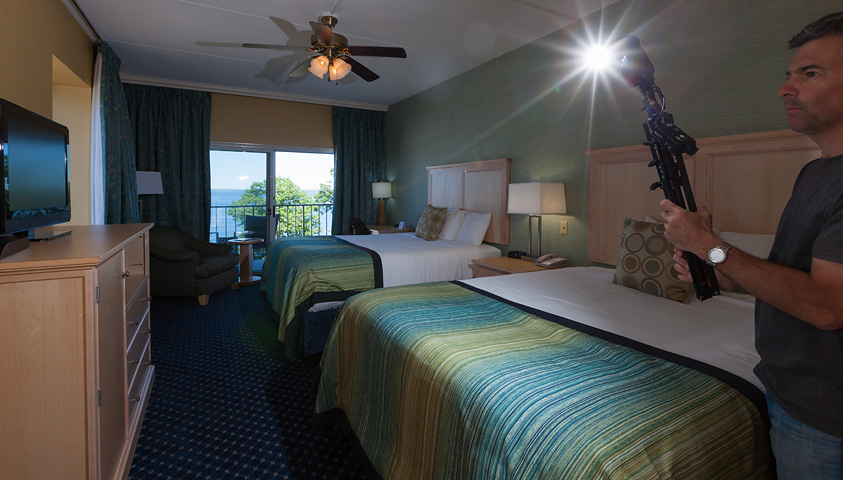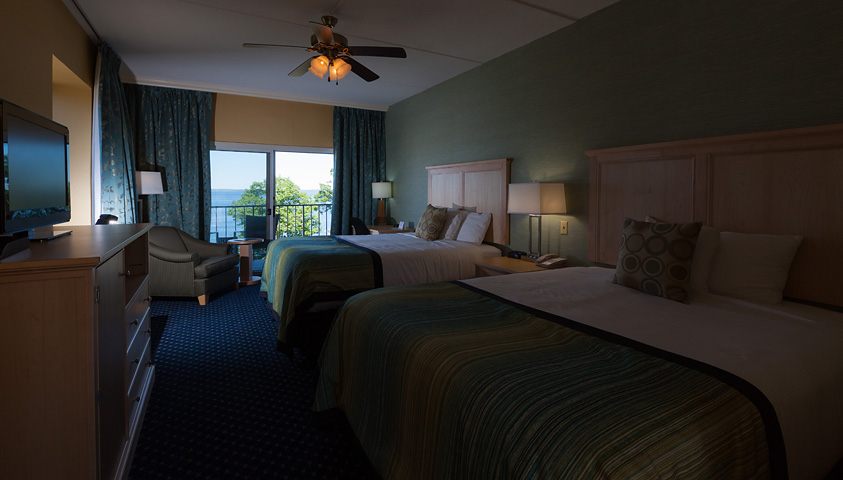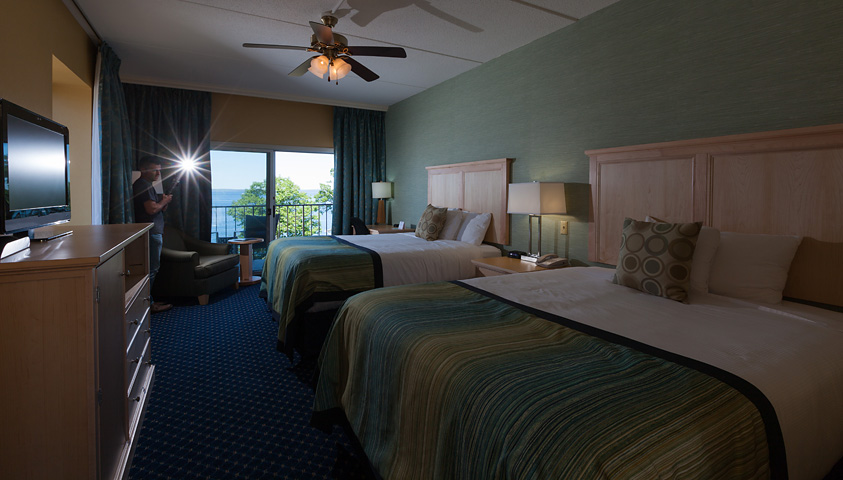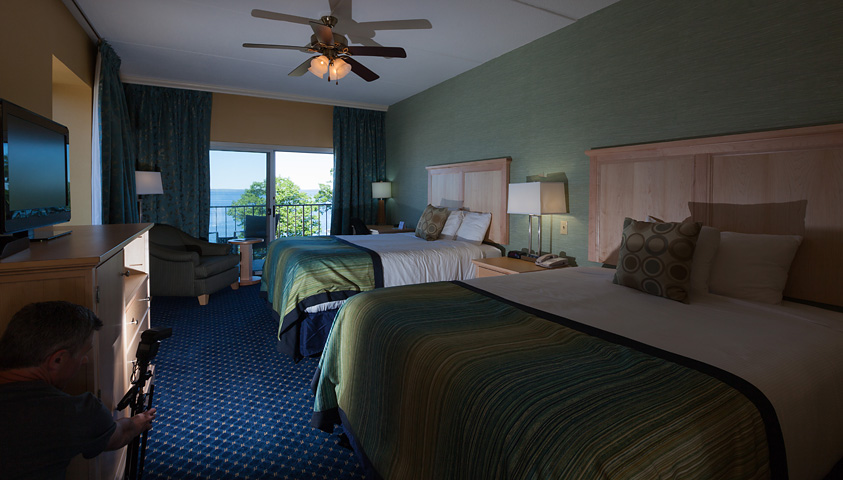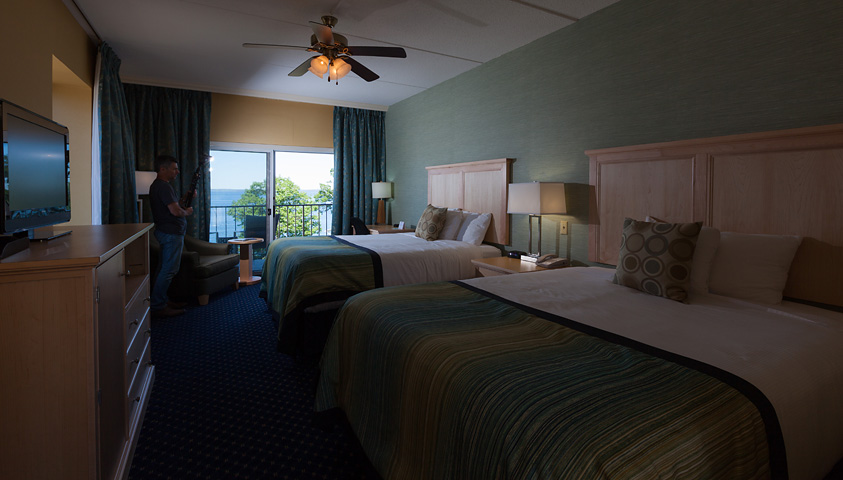We've all seen them. Pictures of hotel rooms that look so appealing we want to spend a night in one of those comfy beds. We usually don't give a thought to how the picture was made... or created. But a lot of work goes into lighting rooms to make them so enticing. Photographers have tricks like placing small but powerful little flash units in the lamp bulb sockets, or using high dynamic range (HDR) photography to bring out more detail in the shadows and highlights. I do it a little differently though, and the technique works to great effect.
Last summer I spent several days shooting a couple hotels in Bar Harbor, Maine to advertise them on the web, in brochures and in print. We shot the restaurants, the lobbies, the pools, the beautiful views, the spa and of course, there were several rooms to shoot. Typically, I'd prefer to bring in my portable studio lighting and place several lights around the room and really light it well. But by the end of the week, we were running out of time to do it that way. I had to leave town and the client wanted to get a couple more rooms in before we wrapped up the week's shooting. There was just no time to unpack the lights and set them up. So I was forced to improvise.
First, I began by choosing the best place to set up my camera and tripod, a spot that would show off the best features of the room- the beds, the balcony and sliding glass doors, not to mention the nice color scheme inspired by the ocean view out the window. In short, it had to look appealing for guests to want to book a few nights.
Then I got out my portable flash, attached it to a small light stand and wired the flash to a radio slave unit that would fire the flash from the camera, from anywhere in the room. I got my client to stand by the camera and take pictures as I moved about the room, using the small flash to light different areas of the room– the dresser, the head boards, the end of the bed, the top of the bedspread, the pillows, etc. I took twenty photos in all. We were done in under seven minutes.
Back in my office, I loaded all twenty images into my computer, made some adjustments in Lightroom, then exported them as one big, layered TIFF file in Photoshop. That's when the work really began. Each picture showcased a different part of the room that was lit by my flash– the pillows, the carpet, etc. By brushing out everything but the nicely lit areas of each photo, I eventually ended up with a beautifully lit picture of the room. What looks like a single picture of the room is really the best parts of all twenty combined into one.
Would I prefer to shoot rooms this way, in minimal time with lots of post processing afterwards? No, but in this case the situation called for it and I really wanted to get the images done for my client before I had to leave town.
I'd highly recommend staying at the Atlantic Oceanside Hotel in Bar Harbor, Maine. Great people and a beautiful place to stay.

